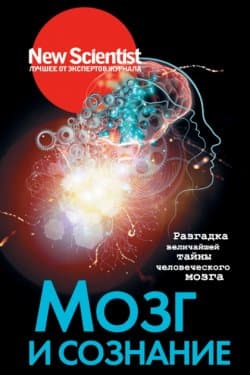Как мы ориентируемся - Маура О’Коннор (2021)
-
Год:2021
-
Название:Как мы ориентируемся
-
Автор:
-
Жанр:
-
Язык:Русский
-
Страниц:200
-
Рейтинг:
-
Ваша оценка:
Автор рассматривает вопросы, которые связаны с навыком ориентирования в пространстве у людей, животных. За счет чего животные способны мигрировать и ориентироваться с поразительной точностью? Каким образом наши предки расселились по всему миру? Маура О’Коннор задалась вопросом, что происходит, когда мы полаемся на навигацию в гаджете, предыдущим навигационным приборам? Что конкретно делает человек во время ориентирования на местности? Чем и почему мы отличается от китов, птиц, пчел? Каким образом повлияли на наше передвижение по миру и представление о своем месте в нем скорость, удобство, технологии? Материал для книги был собран из разных областей знаний и позволил открыть удивительную историю происхождения способностей человека к ориентированию.
Как мы ориентируемся - Маура О’Коннор читать онлайн бесплатно полную версию книги
The Magnetic Sense Is More Complex Than Iron Bits // Evolution News, April 2016. magnetic se/.
Thomson Helen. Cells That Help You Find Your Way Identified in Humans // New Scientist, August 4, 2013.
Tolman Edward C. Cognitive Maps in Rats and Men // Psychological Review 55, № 4 (July 1948). P. 189–208.
Traoré Genome Res, et al. Genetic Clues to Dispersal in Human Populations: Retracing the Past from the Present // Genetics 145 (1997). P. 505.
Tuan Yi-Fu. Topophilia: A Study of Environmental Perception, Attitudes, and Values. Reprint edition. N. Y.: Columbia University Press, 1990.
Tulving Endel. Episodic Memory and Common Sense: How Far Apart? // Philosophical Transactions of the Royal Society of London. Series B, Biological Sciences 356, № 1413 (September 29, 2001). P. 1505–1515.
Turnbull David, and Helen Watson. Maps Are Territories: Science Is an Atlas; A Portfolio of Exhibits. Chicago: University of Chicago Press, 1989.
Vanhoenacker Mark. Skyfaring: A Journey with a Pilot. Reprint edition. N. Y.: Vintage, 2016.
Vargha-Khadem F., D. G. Gadian, K. E. Watkins, A. Connelly, W. Van Paesschen, and M. Mishkin. Differential Effects of Early Hippocampal Pathology on Episodic and Semantic Memory // Science 277, № 5324 (July 18, 1997). P. 376–380.
Viard Armelle, et al. Mental Time Travel into the Past and the Future in Healthy Aged Adults: An fMRI Study // Brain and Cognition 75, № 1 (February 1, 2011). P. 1–9.
Vito Stefania de, and Sergio Della Sala. Predicting the Future // Cortex 47, № 8 (September 1, 2011). P. 1018–1022. cortex.2011.02.020.
Vleck Jenifer Van. Empire of the Air. Cambridge, MA: Harvard University Press, 2013. von Frisch, Karl. Bees: Their Vision, Chemical Senses, and Language. Ithaca, NY: Cornell University Press, 2014.
Vycinas Vincent. Earth and Gods: An Introduction to the Philosophy of Martin Heidegger. The Hague: Martinus Nijhoff, 1961.
Wachowich Nancy, Apphia Agalakti Awa, Rhoda Kaukjak Katsak, and Sandra Pikujak Katsak. Saqiyuq: Stories from the Lives of Three Inuit Women. Montreal: McGill-Queen’s University Press, 2001.
Walker M. Navigating Oceans and Cultures: Polynesian and European Navigation Systems in the Late Eighteenth Century // Journal of the Royal Society of New Zealand 42, № 2 (May 28, 2012). P. 93–98. V0ip25MrI6g.
Walking in Circles: Scientists from Tubingen Show That People Really Walk in Circles When Lost // Max-Planck- Gesellschaft, August 20, 2009.
Wang Ranxiao Frances, and Elizabeth S. Spelke. Human Spatial Representation: Insights from Animals // Trends in Cognitive Sciences 6, № 9 (September 1, 2002). P. 376–382. )01961–7.
Wegman Joost, Anna Tyborowska, Martine Hoogman, Alejandro Arias Vásquez, and Gabriele Janzen. The Brain-Derived Neurotrophic Factor Val66Met Polymorphism Affects Encoding of Object Locations during Active Navigation // European Journal of Neuroscience 45, № 12 (June 2017). P. 1501–1511.
Wehner Rüdiger. Desert Ant Navigation: How Miniature Brains Solve Complex Tasks // Journal of Comparative Physiology A 189, № 8 (July 23, 2003). P. 579–588.
Wehner R., and S. Wehner. Insect Navigation: Use of Maps or Ariadne’s Thread? // Ethology Ecology & Evolution 2, № 1 (May 1, 1990). P. 27–48.

 Как мы ориентируемся
Как мы ориентируемся  Разум убийцы
Разум убийцы  Аскетизм 2
Аскетизм 2  Страх
Страх  Мозг и сознание
Мозг и сознание  Среда обитания: Как архитектура влияет на наше поведение и самочувствие
Среда обитания: Как архитектура влияет на наше поведение и самочувствие  Пир теней
Пир теней  Князь во все времена
Князь во все времена  Когда порвется нить
Когда порвется нить  Пока я здесь
Пока я здесь 












![Photoshop CS2 и цифровая фотография [Самоучитель] Главы 10-14](/uploads/posts/2019-08/1565003436_photoshop-cs2-i-cifrovaja-fotografija-samouchitel-glavy-10-14.jpg)






